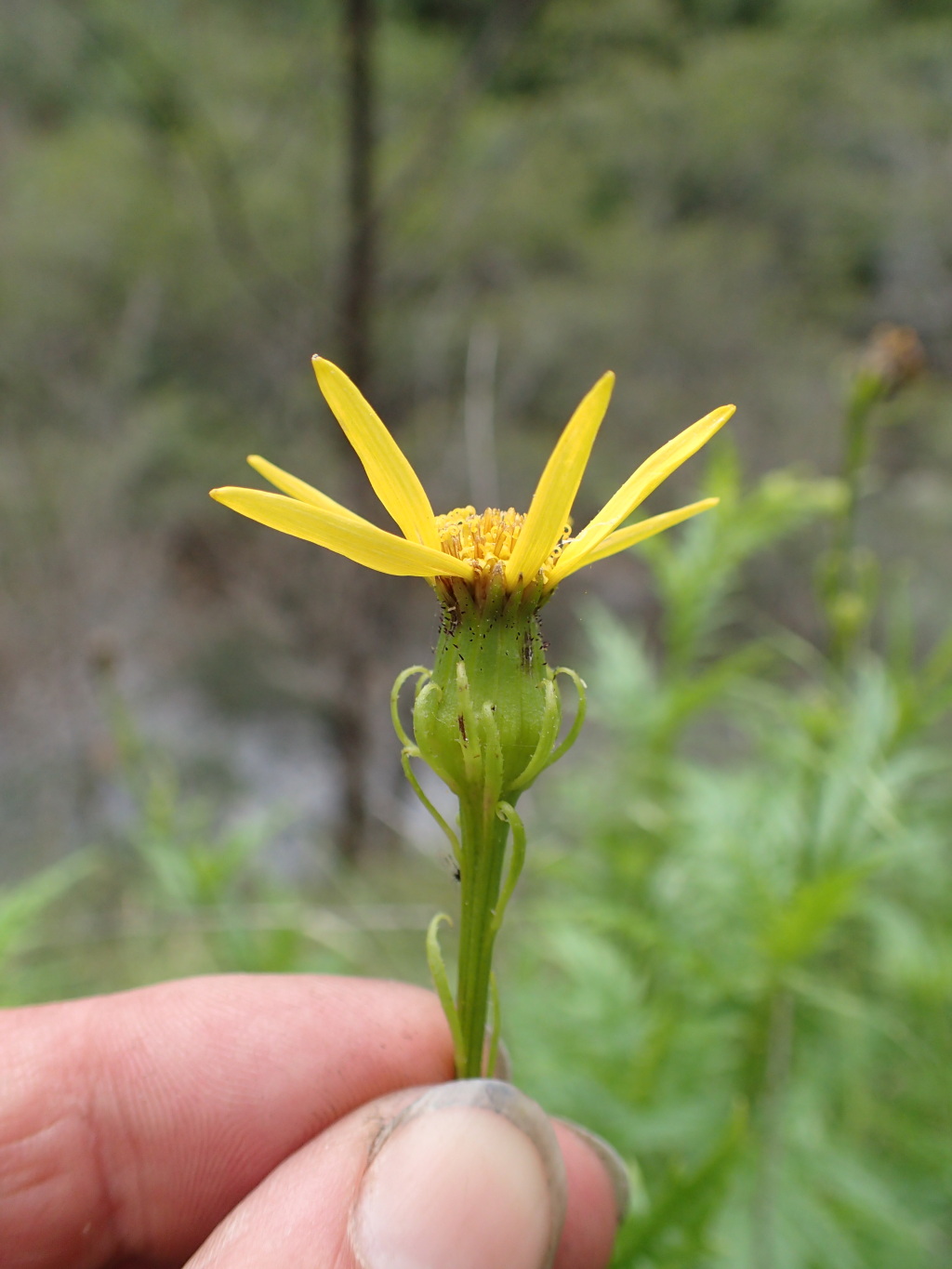Senecio vagus subsp. vagus
Ross, J.H.; Walsh, N.G. (2003). A Census of the Vascular Plants of Victoria, edn 7. Royal Botanic Gardens Melbourne.
Erect glabrescent perennial herb to 1.3 m high. Leaves mostly pseudopetiolate, or the uppermost sometimes sessile, not auriculate at base, ovate to lanceolate, 4–14(–18) cm long, 1–8(–10) cm wide, the largest usually pinnatifid to bipinnatisect, the lower lobes often cleft to the midrib, occasionally merely coarsely toothed, rarely subentire; surfaces glabrous to sparsely and minutely hispid; margins and midrib often with gland-like papillae. Inflorescence an open corymb of c. 3–15 capitula; capitula radiate; involucre campanulate, 8–15 mm long; bracts 12–15, sparsely to densely covered with black glandular papillae; bracteoles prominent, from c. half as long as to subequal to bracts, similarly papillate along margins. Ray florets 6–9, bright yellow, ligules 8–16 mm long; disc florets c. 25–50, yellow. Cypselas cylindric, 3.5–5 mm long, glabrous to very sparsely hairy, blackish, boldly 6–8-ribbed, the ribs usually somewhat wrinkled; pappus of white barbellate hairs 7–9 mm long, deciduous. Flowers Oct.–Mar.
GipP, CVU, GGr, EGL, EGU, WPro, HSF, HNF, Strz, MonT, HFE, VAlp. Scattered but locally common in wet forest communities from the Grampians (Major Mitchell Plateau) to the far east of Victoria, but surprisingly absent from the Otway Range.
Phylogenetic analysis has shown that this species sits outside of Senecio s.s. It's placement is still unresolved, however, initial analysis suggests it is closely related to Arrhenechthites and may be transferred into that genus (Schmidt-Lebuhn et al. 2020).
Subsp. eglandulosus Ali has eglandular bracts and bracteoles and is confined to New South Wales.
 Spinning
Spinning